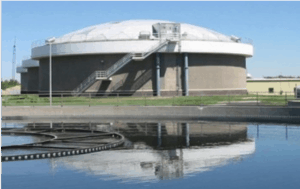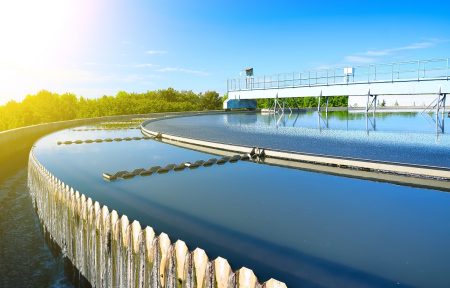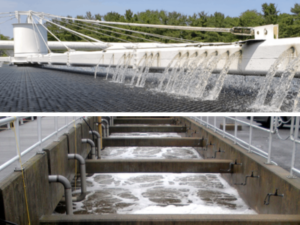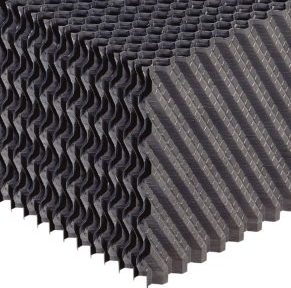Nitrogen and phosphorus are nutrients in a wastewater treatment system. A Biological Nutrient Removal (BNR) process removes either portions of the influent total nitrogen through denitrification or portions of the influent phosphorus through anaerobic selection or both. In a BNR process, ammonia is ultimately converted to nitrogen gas, not just nitrate or nitrite.
If you have requirements for phosphorous removal and denitrification, trickling filters alone will not remove phosphorous, however, they can be integrated in a BNR system. Both BOD filters and nitrifying filters can be integrated in BNR plants where phosphorous is chemically removed. Nitrifying trickling filters may be integrated in BNR plants where phosphorous is biologically removed.
Trickling filters can improve a BNR process in many ways. First, plants with existing BOD filters should have a lifetime cost analysis performed to evaluate the cost effectiveness of retaining these filters by adding denitrification filters in the back for denitrification. Many plants are upgraded to BNR plants with trickling filters in the front for BOD and nitrification (significant capital costs and energy savings that can offset costs for supplemental carbon for denitrification) plus a denitrification sand filter in the back. Second, nitrifying trickling filters can be an energy-efficient alternative for the nitrification stage of an BNR plant versus many other energy-demanding technologies such as MBBR, etc. Third, existing BOD filters can be converted to nitrifying trickling filters if BOD needs to be conserved for denitrification.
There are some situations where trickling filters do not fit, such as plants with extremely high BOD concentration (>5,000 mg/L). Trickling filters for BOD removal are also not ideal for new BNR systems. For BNR upgrades, a lifetime cost analysis should be performed to determine whether the BOD filters should be retains, converted to nitrification filters, or demolished. There are plenty of BNR plants that use BOD filters–contact us to learn more about these applications and installations.




Do you provide a denitrification process, or do we look to other suppliers?
Thank you for your comment!
Trickling filters can be used in a BNR process. In fact, many existing trickling filter plants have been converted from a secondary treatment process to a BNR process while keeping the trickling filters. Among these plants are Truckee Meadows, NV and Littleton/Englewood CO. At the Littleton/Englewood CO plant, instead of getting rid of all the existing trickling filter assets and spending millions of dollars to construct an alternate treatment technology, the original BOD removal and nitrification trickling filters are kept in place.
To achieve denitrification, two measures are taken. One measure is recycling nitrified effluent from the nitrification trickling filters back to the primary clarifiers. Partial denitrification takes place in the primary clarifiers and BOD removal trickling filters as there are abundant nitrate, soluble BOD and bacteria once the recycle mixes with the influent flow. Up to 50% of total inorganic nitrogen (TIN) removal can be obtained through this measure. The other measure is installing denitrification filters after the secondary clarifiers. The denitrification filters are able to further polish and reduce the nitrate concentration down to a desired level. At Truckee Meadows, denitrification filters are installed after the trickling filters to achieve denitrification. For existing trickling filter plants facing denitrification requirements, it is very important to conduct a life cycle cost analysis before making a decision to get rid of the trickling filters. Because trickling filters can be used in a BNR process, it may make more sense to keep them rather than to get rid of them from both cost and ease of operation standpoints.
In recent years, integrating submerged fixed film processes such as moving bed bioreactors (MBBR) or fixed bed bioreactors (FBBR) with trickling filters to achieve total nitrogen removal appears to be a promising solution for total nitrogen removal and is under investigation.